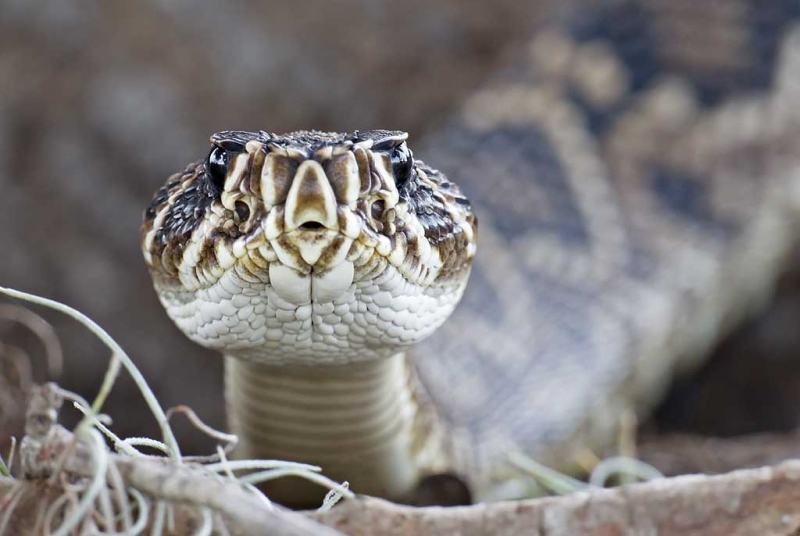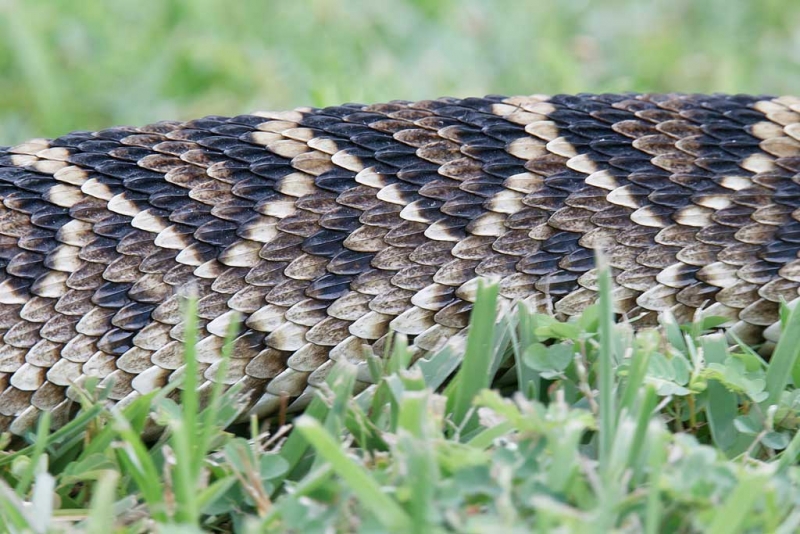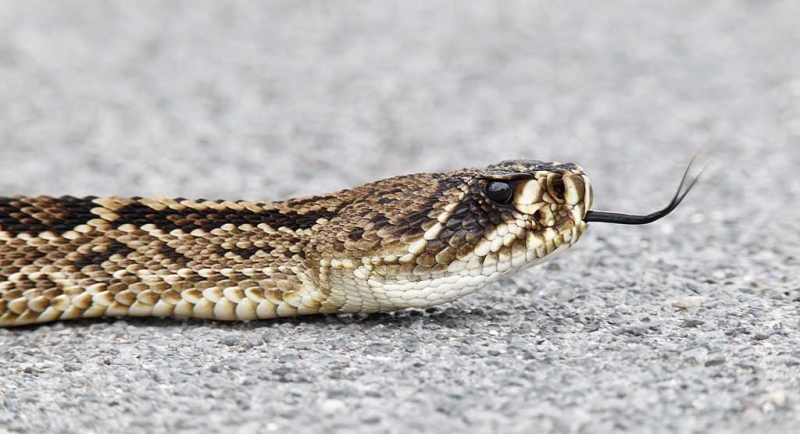|
Tripod-mounted Canon 800mm f/5.6L IS lens, a 25mm Extension tube, the 1.4X III TC, and the EOS-1D Mark IV. ISO 1600. Evaluative metering +2/3: 1/60 sec. at f/5.6 in Manual mode. I placed the tube on the lens and the TC on the camera for a bit of extra close focus but doing it that way you lose AF so I needed to focus manually. That is one of the zillions of lessons in The Art of Bird Photography II (916 pages, 900+ images on CD only.) Lens/TC/Camera Body Micro-Adjustment: 0. For a greater appreciation of the image, click on the photo. Then click on the enlarged version to close it. |
Watch Your Step…
On Saturday past I headed down to the lake for a 40 minute walk. I started up and back on the long pier as I usually do listening to Abe Lincoln on my Bose head phones while counting birds. There were lots of species: 16 or 17 in ten minutes with no binoculars. Ornithologically speaking everything was clicking. Once I was off the pier I walked up a gentle hill that leads to a restroom so that I could check out a big oak dripping with Spanish moss. As I approached there were three mockingbirds flitting about rather excitedly but nothing registered. I walked closer and saw a warbler low down in the tree–looked like a palm, Palm Warbler that is. I took another step or two forward and a bit to my left hoping to confirm the ID. Something registered in my brain and said, Stop.” I looked down and two feet from my left leg was a large Eastern Diamondback Rattlesnake that was so bright and clean that I know it had just shed its skin. It was about 5 1/2 feet long, possibly 6. I made a u-turn and headed to my car for my gear. It was only a ten yard walk.
|
Tripod-mounted Canon 800mm f/5.6L IS lens, the 1.4X III TC,a 25mm Extension tube, and the EOS-1D Mark IV. ISO 1600. Evaluative metering +2/3: 1/160 sec. at f/11 in Av mode. Here I placed the TC on the lens with the tube behind it; this gave me AF. Central sensor (by necessity) AI Servo/Rear Focus AF active at the moment of exposure. Confused: see the rear focus tutorial here. Lens/TC/Camera Body Micro-Adjustment: 0. For a greater appreciation of the image, click on the photo. Then click on the enlarged version to close it. |
Though I had the macro lens in the car I grabbed the 800 :). And the 1.4X TC and a 25mm extension tube to allow for closer focus. The snake was not in a nice setting so I knew that I would want to work tight. It was a cloudy afternoon and losing one stop of light to the TC and another fraction of a stop to the tube I set ISO 1600 as the snake was still under the big tree and light was at a premium. At times the snake was aware of me as I circled it slowly looking for the best angle but for the most part it did its own thing unconcerned by the presence of the curious human. After about ten minutes it slithered across the road (image last) and disappeared into a brush-filled lot. My walks almost always take me down some tight grassy paths. I will surely be lot more careful in the future than I have been in the past. A large, beautiful rattler on your home turf is not something that you forget quickly….
|
Tripod-mounted Canon 800mm f/5.6L IS lens, the 1.4X III TC,a 25mm Extension tube, and the EOS-1D Mark IV. ISO 1600. Evaluative metering +1 stop: 1/250 sec. at f/11 in Av mode. Here again I placed the TC on the lens with the tube behind it; this gave me AF. Central sensor (by necessity) AI Servo/Rear Focus AF active at the moment of exposure. Confused: see the rear focus tutorial here. Lens/TC/Camera Body Micro-Adjustment: 0. For a greater appreciation of the image, click on the photo. Then click on the enlarged version to close it. |
Which Do You Like Best?
Take a moment to leave a comment and let us know which of the three images you like best. And why.
Support both the Bulletins and the Blog by making all your B & H purchases here.
More and more folks are earning multiple contest entries with their B & H purchases. See here for details on that. Eleven great categories, 34 winning and honored images, and prize pools valued in excess of $20,000. Click here to visit the competition home page.
Shopper’s Guide
Below is a list of the gear used to create the image in today’s blog post. Thanks a stack to all who have used the Shopper’s Guide links to purchase their gear as a thank you for all the free information that we bring you on the Blog and in the Bulletins. Before you purchase anything be sure to check out the advice in our Shopper’s Guide.
Canon 800mm f/5.L IS lens. Right now this is my all time favorite super-telephoto lens.
Canon 1.4X III Teleconverter. Designed to work best with the new Series II super-telephoto lenses.
Canon EF 25mm Extension tube. I am never out without one of these in my vest; it allows for closer focus in a variety of situations.
Canon EOS-1D Mark IV professional digital camera body. My two Mark IVs are my workhorse digital camera bodies.
And from the BAA On-line Store:
LensCoats. I have a LensCoat on each of my big lenses to protect them from nicks and thus increase their re-sales value. All my big lens LensCoat stuff is in Hardwood Snow pattern.
LegCoat Tripod Leg Covers. I have four tripods active and each has a Hardwood Snow LegCoat on it to help prevent further damage to my tender shoulders 🙂
Gitzo GT3530LS Tripod. This one will last you a lifetime.
Mongoose M3.6 Tripod Head. Right now this is the best tripod head around for use with lenses that weigh less than 9 pounds. For heavier lenses, check out the Wimberley V2 head.
CR-80 Replacement Foot for Canon 800. When using the 800 on a Mongoose as I do, replacing the lens foot with this accessory lets the lens sit like a dog whether pointed up or down and prevents wind-blown spinning of your lens on breezy days by centering the lens directly over the tripod.
Double Bubble Level. You will find one in my camera’s hot shoe whenever I am not using flash.
Be sure to check out our camera body User’s Guides here.
The Lens Align Mark II. I use the Lens Align Mark II pretty much religiously to micro-adjust all of my gear an average of once a month and always before a major trip. Enjoy our free comprehensive tutorial here.
Canon EOS-1D Mark IV User’s Guide. Learn to use your Mark IV the way that I use mine.

















Love the first image. One gets a sense of drama and danger as the snake is clearly looking right at the viewer and thinking about what to do. I like the second because of the patterns and color. The third one seems more run-of-the-mill. I think that is because even though it is in focus, it is still hard to see the details of the head, particularly the eyes. They almost disappear into the pattern.
Oh and thank you for that explanation! Crystal clear as usual!
You are most welcome. artie
Artie,
My apologies, I didn’t use the B&H link here as I couldn’t locate the Canon 25mm extension tube. I found only Kenko(?) and wanted to ship everything together. I live in the Caribbean so it’s a little more complicated for me whenever I have to purchase anything online.
Much respect.
All that you ever need to do to support our efforts here is to click on this: BAA Main B&H link. As long as you start your shopping searches with that link or with any of the B&H “Photo Gear and More” logo links you will be helping us out and earning free contest entries with your major purchases 🙂 artie
No1 is the money spinner for me but I would have toned down the bg.
Sorry, correction to my previous post – of course I meant that the only species *in my country* are vipers, thus I’d be not prepared to deal with dangerous species in other places.
Here all of the pit vipers are poisonous 🙂 artie
Especially the first shot is super, granted.
PS This strikes me personally, as I have a subjective point of view, at least as an european. It reminds me that, unfortunately, the few times I’ve been able to shoot in the wild in USA (to be picky, only in California) I’ve always felt a bit unease, because the only harmful species are vipers, not necessarily deadly and rather unlikely to meet even in the open wilderness. Thus, in your shoes, my brain wouldn’t have registered anything and… OMG. :-/
Once I saw the snake I was quite safe as I was working at about 17 feet (about 5 meters). In my 28 years of photography plus 7 years of birding before that I have only seen a very few snakes and have never been bitten…. artie
I think the first one is excellent. My main reason for selecting the first one is I was not sure about what I was seeing, and it made me more closely inspect the subject for a short time. When I did see what the subject was, I was immediately impressed. Maybe I’m a little slow but the picture certainly had a big impact on me. Thanks for your BAA e-mails and your blog! You are helping a lot of would-be photographers.
🙂 artie
I like the first image best, It’s very dramatic and very different!!
I especially like the first image because it is personal–that rattler is looking right at me! Glad to notice you used a 800mm lens. 🙂
My preference follows the order that you posted them. The first image focusing on the snake, head on, is beautiful. The eyes are great, and its markings are wonderful. The ground cover near the head gives a nice perspective of the environment. And, of course, the blur of the body in the background is very pleasing, and gives a sense of the animal.
Image two is nice view of the scales. However, by not including the face/head it loses something. That said, cropping out the grass and leaving just the scales in the image would make a dynamite wall paper for a computer monitor.
Image three seems sort of run of the mill. This may be due to the angle of the shot and the pavement. It’s not a bad shot, it just doesn’t draw me in the same way that the first shot does.
I could see why you chose the big lens over the macro. I’d want some distance between me and the snake too.
That first image is stunning! Well done, and braver than I’d have been!
The first image is my fav, definitely. Absolutely love the angle the rattler enters the frame, perfect use of the diagonal ending up on the rule-of-thirds intersection point. As if you didn’t already know this.
Anyway, I have been perusing your blog for some months now, but for the first time I have a question that hasn’t already been answered:
In image #1, I noticed that even with the 25mm extension tube and the 1.4x TC you still shot at f/5.6, something I thought was impossible. I have neither of these things, (they are ordered and should arrive eventually though) I am a novice, and I was just wondering if the arrangement of the extension tube and TC can ‘bypass’ the whole issue of losing light.
Hi Faraaz, With the tube in front of the TC the camera does not “see” the TC, it sees the tube. The right exposure comes out in the wash so to speak–you do not have to make any adjustments for these strange goings on, just your normal exposure compensations…. It does not bypass the issue of losing light but putting the tube in front of the TC does give you an extra stop of shutter speed…
Did you remember to use our B&H link? artie
#1 for sure because of the direct stare and sharpness. Can only look at it from a distance as I’m not sure how much protection the monitor screen is…
Artie the first is a magic capture.
While I love the scale detail, the head-on shot is definitely tops. I love the snake’s deadly concentration on you, and the looming OOF mass of his body filling the diagonal. Is it cropped at all, or did you get that great composition in camera?
I pictured you tempting fate with a 100mm until I read the details. That’s a great use of a long lens. I often encounter rattlers in the southwest deserts, but not of that size.
Thanks Ron. This is a small crop from our left and below. artie
Way cool! The 1st image really has the impact with that full-on portrait. Did you also get a variation with the tongue out? And the 3rd image is great with the tongue out and the head detail. The texture of the scales in the 2nd image is great but I agree that the grass stems interrupt the pattern. “Abe Lincoln”?
Thanks Gerald. A. Lincoln. A biography by Ronald C. White Jr. A Brilliance Audio CD. artie
What grabbed me about the first image is the eyes; I read the specs beneath the image, and I thought; all that kit, and still the eyes are sharp as a tack. I like the scales detail in #2 also. #3 would have impressed me if you hadn’t posted 1 and 2. Denny
And to think, manual focus! Notice also the two pits below the eyes…. artie
The first image is phenomenal! Love it. LIke the 3rd one too.
Excellent timing on the forked-tongue in #3!
Jamie
The frontal head shot is a beauty! Well done.
All 3 with the first being my most favorite. It is killer awesome! The second is a nice detail shot of the scales and pattern. The third one because it would make a great Fractalius image 🙂
When I lived in the Midwest I met a number of this guy’s close relatives. However, I never remember an impression like the direct stare of #1. Nice work.
Definitely the first shot….TOTALLY AWESOME!!
#1 is a perfect classical head-on image.
#2 is an AM Artsy Image which I keep going back for another look. I would br tempted to shorten some of the grass blades to create a smoother line similar to the too line. What a wonderful hatband if you were into that kind of thing.
#3 doesn’t grab me.
Favorite: #1! The head is tack sharp and the OOF body projects siza and power.
TFS
YAW. Yeah, I wish that the grass was a lot shorter…. artie
First, for sure…very creepy! That said, I can picture a tight crop on #2 to create a cool pattern image.
As Sgt Phil Esterhaus used to say…Artie, let’s be careful out there!
Loren
The first image is incredible! I absolutely love seeing this head of the rattler this large. Excellent job!
I love the first image! Great job, I don’t think I would have been able to get that shot!